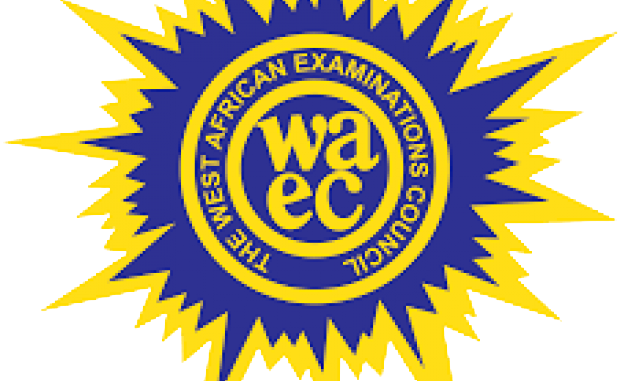
WAEC 2023 CHEMISTRY PRACTICAL ANSWERS – EXAMKING.NET
••••••••••••••••••••••••••••••••••••••••••••••••••••
CLICK HERE TO JOIN OUR TELEGRAM CHANNEL FOR ALL 2023 EXAM ANSWERS FOR FREE
••••••••••••••••••••••••••••••••••••••••••••••••••••
CHEMISTRY -PRACTICAL ANSWERS
(1)


••••••••••••••••••••••••••••••••••••••••••••••••••••
(2)
(2a)
TEST; C + distilled water + shake
OBSERVATIONS; It dissolves to give a colourless or clear solution
INFERENCE; Soluble salt suspected
(2ai)
TEST; Solution C + litmus paper
OBSERVATIONS; It has no effect on both blue and red litmus paper
INFERENCE; Neutral solution
(2aii)
TEST; solution C + Fehling solution A and B + heat
OBSERVATIONS; It gives a black red colour
INFERENCE; Reading agent confirmed
(2bi)
TEST; D + heat
OBSERVATIONS; It turns yellow on heating and white on cooling
INFERENCE; ZnO is present
(2bii)
TEST; D + dilute Hcl + heat
OBSERVATIONS; It dissolves completely to give a clear or colourless solution
INFERENCE; Solution chlorides of Zn³+, Al³+ is present
(2biii)
TEST; Solution D + NaOH in drops and then in excess
OBSERVATIONS; It gives white gelatinous precipitate. The precipitate is soluble in excess.
INFERENCE; Al³+, Zn²+ present.
Al³+, Zn²+ present .
(2biv)
TEST; Solution D + NH3 in drops and then in excess
OBSERVATIONS; It gives white gelatinous precipitate. The precipitate is soluble in excess NH3
INFERENCE; Al³+, Zn²+ is present.
Zn²+ confirmed.


•••••••••••••••••••••••••••••••••••••••••••••••••••
(3ai)
– Formation of a precipitate; Sodium hydroxide reacts with lead nitrate to form lead(ii) hydroxide as a precipitate.
Pb(NO3)2 + 2NaOH –> Pb(OH)2 + 2NaNO3
– Cloudiness or opacity; As the lead(ii) hydroxide precipitate forms, the solution may become cloudy or opaque due to the presence of the solid particles suspended in the liquid
(3aii)
– Formation of precipitate; Iron(iii) Fe(OH)3 is insoluble in water and appears as a reddish brown precipitate.
– Colour change; Colour change form yellowish to reddish brown
(3b)
– Obtain a small amount of benzoic acid
– Prepare a melting point apparatus
– Fill the capillary tube with the sample of benzoic acid powder
– Insert the capillary tube unit the melting point apparatus
– Begin heating the temperature is increased at a slow rate you allow pressure observation of the melting point
– Observe the melting point
– Repeat the process to ensure accuracy
– Record the melting point
CHEMISTRY -PRACTICAL QUESTIONS PAPER





CHEMISTRY -PRACTICAL INSTRUCTIONS
1. Great care should be taken to ensure that the information given in items 2 and 3 below does not reach the candidates either directly or indirectly before the examination.
2. In addition to the fittings and reagents normally found in a chemistry laboratory, the following apparatus and materials will be required by each candidate:
(a) One burette of 50cm3 capacity;
(b) One pipette, either 20cm3 or 25cm3. (All candidates at one centre must use pipettes of the same volume. These should be clean and free from grease).
(c) The usual apparatus for titration;
(d) The usual apparatus and reagents for qualitative work including the following with all reagents appropriately labeled;
(i) Dilute sodium hydroxide solution;
(ii) Dilute hydrochloric acid;
(iii) Dilute trioxonitrate (V) acid;
(iv) Silver trioxonitrate (V) solution;
(v) Acidified potassium dichromate solution;
(vi) Aqueous ammonia;
(vii) Lime water;
(viii) Red and Blue litmus paper;
(ix) Dilute tetraoxosulphate (VI) acid;
(x) Fehlings solution A & B.
(e) Spatula;
(f) Filtration apparatus;
(g) One beaker;
(h) One boiling tube;
(i) Four test tube;
(j) Methyl orange as indicator;
(k) Glass rod;
(l) Wash bottle containing distilled/deionized water;
(m) Burning splint;
(n) Watch glass;
(o) Bunsen burner/source of heat;
(p) Droppers;
(q) Mathematical table/calculator.
3. Each candidate should be supplied with the following, where ‘n’ is the candidate’s serial number.
(a) 150cm3 of a solution of HCL in a corked flask or bottle labeled ‘An’. These should all be the same containing 8.5cm3 of concentrated HCl per dm³ of solution.
(b) 150cm3 of Na2CO3 .10H2O in a corked flask or bottle labeled ‘Bn’. These should all be the same cointaing 5.0g of the hydrated salt per dm3 of solution.
(c) One spatulaful of glucose in a specimen bottle labeled ‘Cn’. This must be the same for all candidate
(d) One spatulaful of zinc oxide powder in a specimen bottle labeled ‘Dn’. This must be the same for all candidates.
4. In all cases, more materials may be issued if required.
5. The actual concentrations of A and B must be stated on the Supervisor’s Report Form. The candidates will assume that the concentrations are exactly as stated in the question paper.
6. It should be noted that schools are not allowed to amend the information provided on the question paper or substitute any substance/solution for those specified in these instructions.
ARRANGEMENT AND SERIAL NUMBERS OF CANDIDATES
7. The laboratory places should be numbered serially and the candidates should be allotted these places strictly in the order of their index numbers. The number of every specimen supplied to each candidate should be the same as his or her serial number.
8. If a candidate is absent, his or her serial number should not be allotted to another candidate.
9. If the candidates are divided into a number of sets, the serial numbers should be continued through the sets, so that no serial number is repeated.
CLICK HERE TO JOIN OUR TELEGRAM CHANNEL FOR ALL 2023 EXAM ANSWERS FOR FREE
••••••••••••••••••••••••••••••••••••••••••••••••••••
Completed!!!
••••••••••••••••••••••••••••••••••••••••••••••••••••

Thanks so much for your help